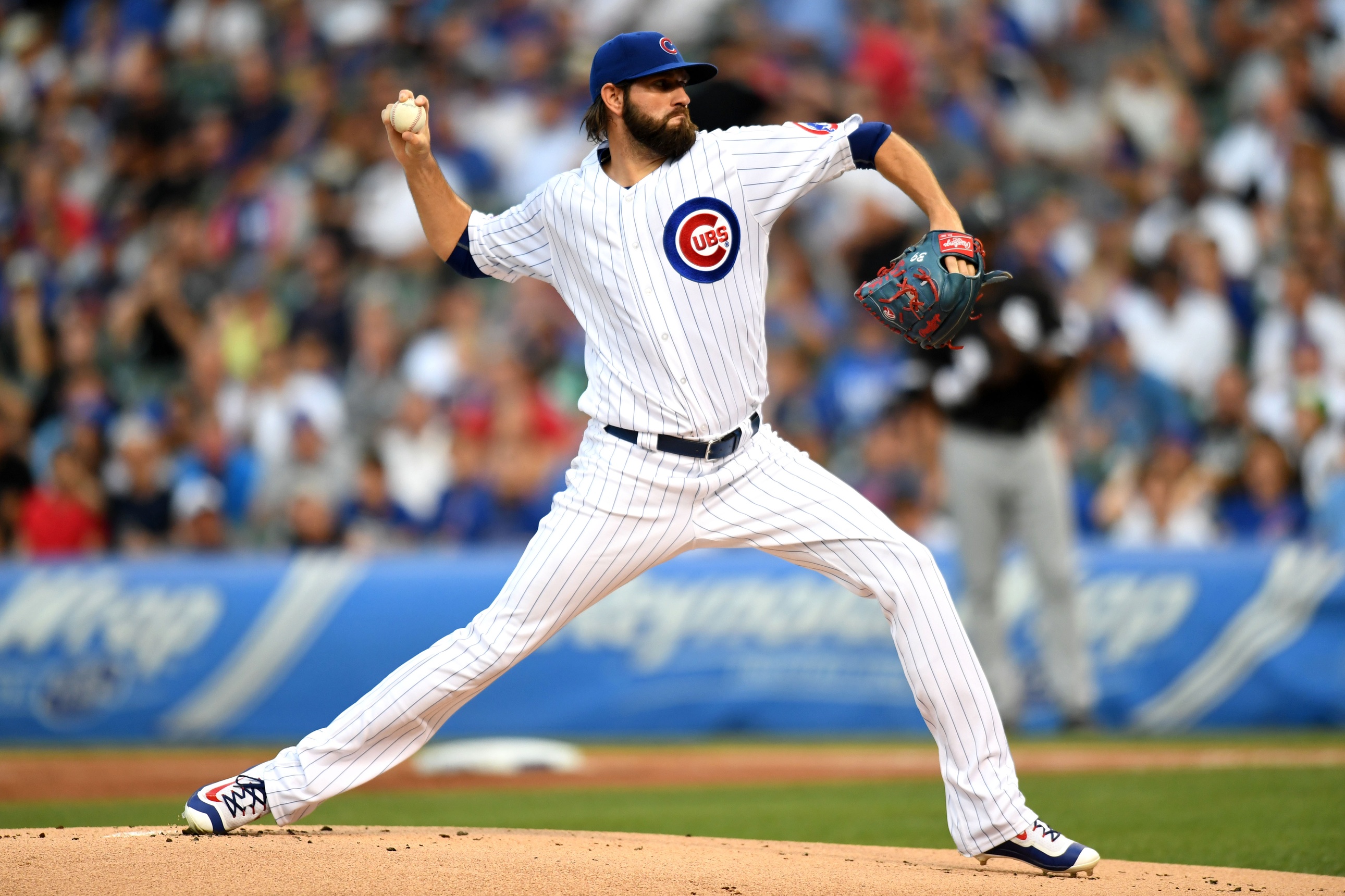Determined not to let football steal the show in Kansas City, on Sunday night Ken Rosenthal reported the Royals had reached an agreement with free agent pitcher Jason Hammel. Jeff Passan reported the deal was for two years for a guaranteed $16 million. Details on the breakdown of the contract weren’t available as of this posting, but based on other contracts we saw this winter from the Royals, it’s safe to speculate the first year would be around $6 million with the second at $10 million. Give or take a million.
Last year, Hammel made 30 starts for the Cubs and limited opponents to a .263 TAv. Yet his walk rate ticked up ever so slightly and his strikeout rate suffered a similar decline. With a 1.3 HR/9 over the last four seasons and a 1.35 HR/9 last summer, he’s also become prone to the dinger. The result was a 4.97 DRA, his highest rate since his 2013 season in Baltimore. He’s also never topped 180 innings in a season, although he has pitched past the 170 inning mark five times. At the end of last year, he was scratched from a start with elbow discomfort. Ultimately, the Cubs decided they couldn’t trust him in the intensity of the postseason and decided to go with a four-man rotation, leaving him off the roster.
Hammel was signed by the Cubs for one year at $6 million prior to the 2014 season. He was dealt to Oakland in July as part of the Addison Russell/Jeff Samardzija trade and was the last pitcher the A’s used in the Wild Card game. You remember how that one ended. He returned to the North Side on a two year deal for $20 million where the Cubs held a $12 million team option for 2017. They declined and he hit the open market.
Hammel is primarily a four-pitch pitcher, mixing a slider and a curve with a two and four seam fastball. According to data collected by Brooks Baseball, he throws his slider more frequently than either of his fastball offerings. With good reason as it’s his most effective pitch. Last year, the opposition hit .188 with a .321 slugging percentage against his slider. He also got a whiff on around 35 percent of the swings against his slider. By comparison, his four-seam fastball was hit to the tune of a .254 BA and a .463 SLG while the opposition posted a .279 BA and a .473 SLG against his two-seamer.
His two-seamer gets the majority of his ground balls, but those also will fly over the fence. Hitters aren’t particularly choosy when it comes to parking either his four or two seamer actually. Hammel will also feature a change, which he uses infrequently. Probably for good reason. He averages about a six mph difference between his fastball and his change-up. The slider is definitely his put-away pitch. Batters from either side of the plate will see it around 43 percent of the time when faced with two strikes. The trick is the slider is also the pitch they’re most likely to see to open the plate appearance. Let’s just say if you walk to the plate against Hammel, you’re going to see a slider.
At this stage of the winter – barely days from the date where pitchers and catchers report – Hammel was the best arm remaining on the market. Normally, that would be faint praise. This year however, there are still a plethora of unsigned free agents (both pitchers and position players) who could provide positive impact for a club. The signing is a bit of a coup for the Royals, who have been mostly silent on the market this off season and who faced the daunting prospect of replacing Yordano Ventura in the rotation. Obviously, Hammel doesn’t have the same sort of upside as Ventura – they’re completely different pitchers at different stages of their career. It’s just that, with the loss of Ventura, the Royals needed to quickly find someone to take his spot in the rotation. It’s not entirely comfortable to say so soon after the tragic death of Ventura, but baseball will still be played and the Royals need to have someone to carry innings if they are going to compete in the AL Central.
More fallout from this signing means it looks as though the Royals will follow through on keeping Matt Strahm in the bullpen. With the way the winter unfolded, with the trade of Wade Davis and the move of Greg Holland to Colorado (who many felt would be a prime candidate to return to Kansas City) the Royals are now left with only the first H of the vaunted HDH triumvirate. Based on his audition last summer, Strahm can be a key component of the bullpen while he keeps an eye on his eventual rightful spot in the rotation.
Hammel isn’t a front of the rotation starter, or even a guy you’d point at and say, “He’s the team’s number three guy.” What he is, though, is an average arm you can use on an affordable deal to fill out your rotation. If the Royals can keep him there all summer, this signing could be the steal of the February free agent deals.
